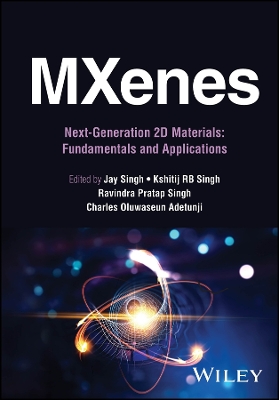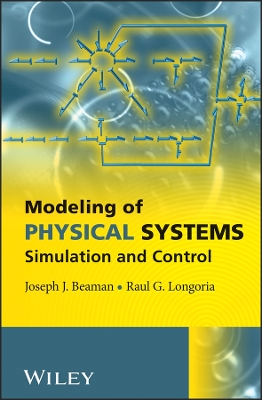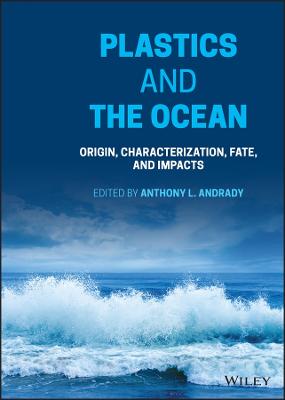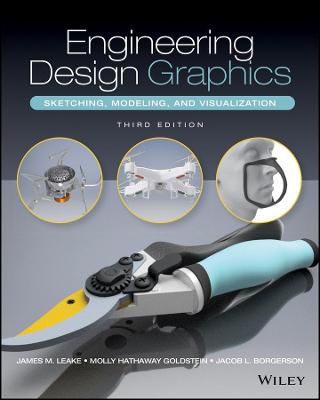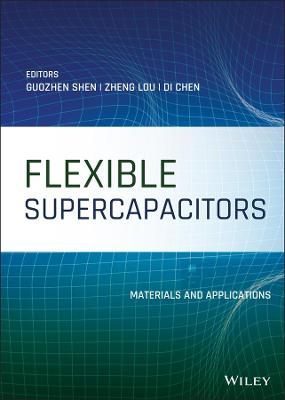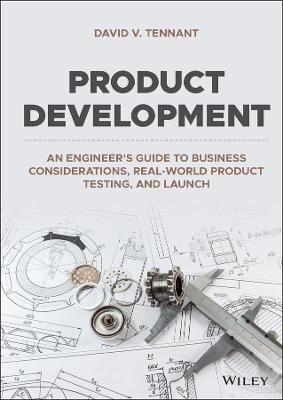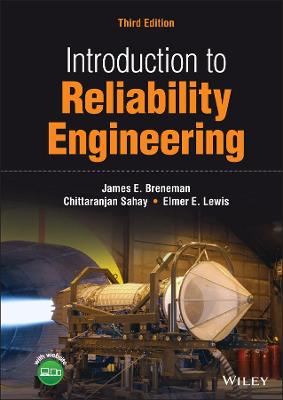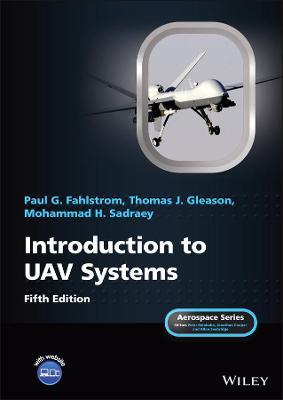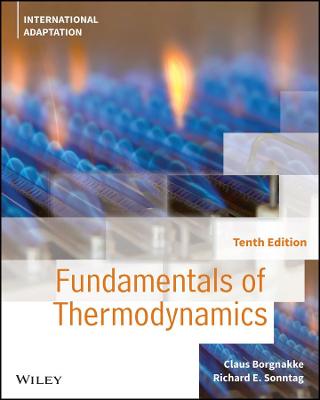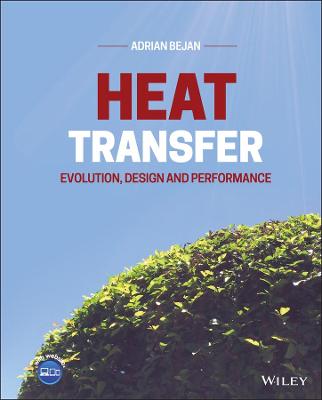Thermal Systems Design
 -15%
portes grátis
-15%
portes grátis
Thermal Systems Design
Fundamentals and Projects
Martin, Richard J.
John Wiley & Sons Inc
03/2022
560
Dura
Inglês
9781119803478
15 a 20 dias
1158
Acknowledgments xi
Preface to the Second Edition (Fundamentals and Projects) xiii
Acknowledgments xv
About the Author and the Textbook xvii
About the Companion Website xix
1 Thermodynamics 1
1.1 Units of Measure 1
1.2 Mass/Force Unit Conversion 2
1.3 Standard Temperature and Pressure 3
1.4 Control Mass, Control Volume 3
1.5 Laws of Thermodynamics 5
1.6 Conservation Laws 6
1.7 Thermodynamic Variable Categories 7
1.8 Ideal Gas Law 10
1.9 History of Temperature 11
1.10 Thermodynamic States 12
1.11 Internal Energy, Enthalpy, Entropy 13
1.12 Availability (Exergy) 15
1.13 Homework Problems 16
Cited References 17
2 Fluid Mechanics 19
2.1 Viscosity, Shear, Velocity 19
2.2 Hydrostatics, Buoyancy 20
2.3 The Continuity Equation 21
2.4 Mass, Volume, Mole Flows 22
2.5 Reynolds Number, Velocity Profiles 23
2.6 The Momentum Equation 27
2.7 Bernoulli's Equation 27
2.8 Stagnation, Static, Dynamic Pressure 28
2.9 Friction Factor, Hydraulic Diameter 29
2.10 Moody Chart, Chen Equation 31
2.11 Modified Bernoulli Equation 33
2.12 Alternate Moody Charts 33
2.13 Entry Effects, Minor Losses 35
2.14 Porous Media Pressure Drop 36
2.15 Homework Problems 37
Cited References 38
3 Heat Transfer 41
3.1 Fourier's Law 41
3.2 Newton's Law of Cooling 43
3.3 The Stefan-Boltzmann Law 43
3.4 The Energy Equation 44
3.5 The Entropy Equation 45
3.6 Electricity Analogy for Heat 45
3.7 Film, Mean Temperature 47
3.8 Nusselt, Prandtl Numbers 48
3.9 Flows Across Tube Banks 49
3.10 "Gotcha" Variables 52
3.11 Radiation and Natural Convection 53
3.12 Radiant Exchange 54
3.13 Types of Heat Exchangers 58
3.14 Heat Exchanger Fundamentals 59
3.15 Overall Heat Transfer Coefficient 59
3.16 LMTD Method 60
3.17 Effectiveness-NTU Method 61
3.18 Porous Media Heat Transfer 63
3.19 External Convection to Individual Spheres and Cylinders 65
3.20 Homework Problems 67
Cited References 68
4 Introduction to Combustion 71
4.1 Fuels for Combustion 71
4.2 Air for Combustion 72
4.3 Atomic and Molar Mass 73
4.4 Balancing Chemical Equations 73
4.5 Stoichiometry and Equivalence Ratio 74
4.6 The Atom Equations 76
4.7 Sensible and Chemical Enthalpies 78
4.8 Thermochemical Property Tables 82
4.9 Enthalpy of Combustion 83
4.10 Enthalpy Datum States 85
4.11 Adiabatic Combustion Temperature 86
4.12 Equilibrium and Kinetics 88
4.13 Pollutant Formation and Control 93
4.14 Combustion Safety Fundamentals 95
4.15 Other Topics in Combustion 96
4.16 Homework Problems 97
Cited References 98
5 Process Flow Diagrams 101
5.1 Intelligent CAD 101
5.2 Equipment 102
5.3 Process Lines 105
5.4 Valves and Instruments 105
5.5 Nonengineering Items 105
5.6 Heat and Material Balance 106
5.7 PFD Techniques 107
5.8 Homework Problems 111
Cited References 113
6 Advanced Thermodynamics 115
6.1 Equations of State 115
6.2 Thermodynamic Property Diagrams 117
6.3 Gibbs, Helmholtz, and Maxwell 118
6.4 Equations of State 121
6.5 Boiling and Condensation 124
6.6 Psychrometry 126
6.7 Liquid-Vapor Equilibrium for NH3 + H2O Mixtures 133
6.8 Efficiency vs Effectiveness 137
6.9 Space vs Time 139
6.10 Homework Problems 141
Cited References 142
7 Burners and Heat Recovery 145
7.1 Burners 145
7.2 Combustion Safeguarding 147
7.3 Thermal Oxidizers 149
7.4 Destruction Efficiency 151
7.5 Recuperators and Regenerators 152
7.6 Packed-bed Heat Storage 156
7.7 Heat Exchanger Discretization 157
7.8 Thermal Destruction of Airborne Pathogens 159
7.9 Special Atmosphere Heat Treating 160
7.10 Burner and Heat Exchanger Failures 161
7.11 Homework Problems 163
References 166
8 Boilers and Power Cycles 169
8.1 Rankine Cycle 169
8.2 Boiler Terminology 171
8.3 Efficiency Improvement 174
8.4 Controls and Safeguards 177
8.5 Blowdown and Water Treatment 179
8.6 Air Pollutant Reduction 181
8.7 Organic Rankine Cycle 185
8.8 Boiler Failure Analysis 186
8.9 Homework Problems 189
Cited References 191
9 Combustion Turbines 193
9.1 Turbomachinery 193
9.2 Brayton Cycle 194
9.3 Polytropic Processes 196
9.4 Isentropic Efficiency 197
9.5 Gas Property Relationships 200
9.6 Reheating, Intercooling 201
9.7 Recuperation 202
9.8 Homework Problems 204
Cited References 206
10 Refrigeration and Heat Pumps 207
10.1 Vapor Refrigeration Cycle 207
10.2 Gas Refrigeration Cycle 210
10.3 Heat Pump Efficiency 211
10.4 Sizing and Energy Usage 212
10.5 Refrigerants 214
10.6 Compressors 217
10.7 Air Handlers 219
10.8 Refrigeration Control 222
10.9 Coil Defrost 224
10.10 Compressorless Refrigeration 225
10.11 Thermoelectric Coolers 234
10.12 Refrigeration System Failures 235
10.13 Homework Problems 238
Cited References 242
11 Other Thermal Systems 245
11.1 Solar Fluid Heating 245
11.2 Fluid Heaters 248
11.3 Evaporative Cooling 251
11.4 Geothermal Heat Sink 252
11.5 Thermal Energy Storage 254
11.6 Thick-layer Product Dehydration 257
11.7 Desalination 259
11.8 Steam Sterilization 261
11.9 Espresso Machine 262
11.10 Hot Air Balloon 266
11.11 Homework Problems 269
Cited References 272
12 Pipe and Fluid Mover Analysis 275
12.1 Fluid Mover Categories 275
12.2 Conveying Means Categories 277
12.3 Leak Prevention 278
12.4 Pressure Rise and Drop 279
12.5 Electricity Analogy for Flow 280
12.6 Piping Network Rules 282
12.7 Blower and System Curves 283
12.8 Pump and Blower Work 287
12.9 Compressibility in Long Pipes 291
12.10 Chimney Effect 292
12.11 Homework Problems 295
Cited References 297
13 Thermal Protection 299
13.1 Refractory Ceramics 299
13.2 Refractory Metals 301
13.3 Thermal Insulation 301
13.4 Radiative-Convective Insulation Systems 304
13.5 Skin Contact Burns 304
13.6 Protection Against Thermal Expansion 305
13.7 Protection Against Thermal Shock 308
13.8 Homework Problems 309
Cited References 310
14 Piping and Instrumentation Diagrams 311
14.1 Design Packages 311
14.2 Temperature Sensors 313
14.3 Pressure Sensors 315
14.4 Flow Sensors 317
14.5 Level Sensors 319
14.6 Exhaust Gas Analyzers 321
14.7 Combustion Safety Instruments 323
14.8 Valves and Actuators 325
14.9 ISA Tag Glossary 329
14.10 P&ID Techniques 331
14.11 Homework Problems 332
Cited References 333
15 Control of Thermal Systems 335
15.1 Control Nomenclature 335
15.2 Thermostatic Control 335
15.3 PID Control 338
15.4 Safety Controls and Interlocks 341
15.5 Sequencing Control 342
15.6 Ladder Logic 343
15.7 Homework Problems 345
Cited References 346
16 Process Safety 347
16.1 Safety Terminology 347
16.2 Safety Hierarchy 349
16.3 Safeguards and Warnings 350
16.4 History of Safety Standards 351
16.5 Process Hazard Analysis 352
16.6 Homework Problems 354
Cited References 355
17 Process Quality Methods 357
17.1 Quality Terminology 357
17.2 Advanced Statistical Methods for Quality in Thermal Processes 358
17.3 Management of Change for Quality, Stewardship, and Safety 362
17.4 Homework Problems 364
Cited References 366
18 Procurement, Operation, and Maintenance 367
18.1 Engineering Design Deliverable 367
18.2 Engineering Data Sheets 367
18.3 Construction and Commissioning 368
18.4 Inspection, Maintenance, and Training 371
18.5 Operation and Maintenance Manual 373
18.6 Homework Problems 375
Cited References 375
Appendix A Property Tables 377
Appendix B Excel (VBA) Custom Functions 449
Index 511
Acknowledgments xi
Preface to the Second Edition (Fundamentals and Projects) xiii
Acknowledgments xv
About the Author and the Textbook xvii
About the Companion Website xix
1 Thermodynamics 1
1.1 Units of Measure 1
1.2 Mass/Force Unit Conversion 2
1.3 Standard Temperature and Pressure 3
1.4 Control Mass, Control Volume 3
1.5 Laws of Thermodynamics 5
1.6 Conservation Laws 6
1.7 Thermodynamic Variable Categories 7
1.8 Ideal Gas Law 10
1.9 History of Temperature 11
1.10 Thermodynamic States 12
1.11 Internal Energy, Enthalpy, Entropy 13
1.12 Availability (Exergy) 15
1.13 Homework Problems 16
Cited References 17
2 Fluid Mechanics 19
2.1 Viscosity, Shear, Velocity 19
2.2 Hydrostatics, Buoyancy 20
2.3 The Continuity Equation 21
2.4 Mass, Volume, Mole Flows 22
2.5 Reynolds Number, Velocity Profiles 23
2.6 The Momentum Equation 27
2.7 Bernoulli's Equation 27
2.8 Stagnation, Static, Dynamic Pressure 28
2.9 Friction Factor, Hydraulic Diameter 29
2.10 Moody Chart, Chen Equation 31
2.11 Modified Bernoulli Equation 33
2.12 Alternate Moody Charts 33
2.13 Entry Effects, Minor Losses 35
2.14 Porous Media Pressure Drop 36
2.15 Homework Problems 37
Cited References 38
3 Heat Transfer 41
3.1 Fourier's Law 41
3.2 Newton's Law of Cooling 43
3.3 The Stefan-Boltzmann Law 43
3.4 The Energy Equation 44
3.5 The Entropy Equation 45
3.6 Electricity Analogy for Heat 45
3.7 Film, Mean Temperature 47
3.8 Nusselt, Prandtl Numbers 48
3.9 Flows Across Tube Banks 49
3.10 "Gotcha" Variables 52
3.11 Radiation and Natural Convection 53
3.12 Radiant Exchange 54
3.13 Types of Heat Exchangers 58
3.14 Heat Exchanger Fundamentals 59
3.15 Overall Heat Transfer Coefficient 59
3.16 LMTD Method 60
3.17 Effectiveness-NTU Method 61
3.18 Porous Media Heat Transfer 63
3.19 External Convection to Individual Spheres and Cylinders 65
3.20 Homework Problems 67
Cited References 68
4 Introduction to Combustion 71
4.1 Fuels for Combustion 71
4.2 Air for Combustion 72
4.3 Atomic and Molar Mass 73
4.4 Balancing Chemical Equations 73
4.5 Stoichiometry and Equivalence Ratio 74
4.6 The Atom Equations 76
4.7 Sensible and Chemical Enthalpies 78
4.8 Thermochemical Property Tables 82
4.9 Enthalpy of Combustion 83
4.10 Enthalpy Datum States 85
4.11 Adiabatic Combustion Temperature 86
4.12 Equilibrium and Kinetics 88
4.13 Pollutant Formation and Control 93
4.14 Combustion Safety Fundamentals 95
4.15 Other Topics in Combustion 96
4.16 Homework Problems 97
Cited References 98
5 Process Flow Diagrams 101
5.1 Intelligent CAD 101
5.2 Equipment 102
5.3 Process Lines 105
5.4 Valves and Instruments 105
5.5 Nonengineering Items 105
5.6 Heat and Material Balance 106
5.7 PFD Techniques 107
5.8 Homework Problems 111
Cited References 113
6 Advanced Thermodynamics 115
6.1 Equations of State 115
6.2 Thermodynamic Property Diagrams 117
6.3 Gibbs, Helmholtz, and Maxwell 118
6.4 Equations of State 121
6.5 Boiling and Condensation 124
6.6 Psychrometry 126
6.7 Liquid-Vapor Equilibrium for NH3 + H2O Mixtures 133
6.8 Efficiency vs Effectiveness 137
6.9 Space vs Time 139
6.10 Homework Problems 141
Cited References 142
7 Burners and Heat Recovery 145
7.1 Burners 145
7.2 Combustion Safeguarding 147
7.3 Thermal Oxidizers 149
7.4 Destruction Efficiency 151
7.5 Recuperators and Regenerators 152
7.6 Packed-bed Heat Storage 156
7.7 Heat Exchanger Discretization 157
7.8 Thermal Destruction of Airborne Pathogens 159
7.9 Special Atmosphere Heat Treating 160
7.10 Burner and Heat Exchanger Failures 161
7.11 Homework Problems 163
References 166
8 Boilers and Power Cycles 169
8.1 Rankine Cycle 169
8.2 Boiler Terminology 171
8.3 Efficiency Improvement 174
8.4 Controls and Safeguards 177
8.5 Blowdown and Water Treatment 179
8.6 Air Pollutant Reduction 181
8.7 Organic Rankine Cycle 185
8.8 Boiler Failure Analysis 186
8.9 Homework Problems 189
Cited References 191
9 Combustion Turbines 193
9.1 Turbomachinery 193
9.2 Brayton Cycle 194
9.3 Polytropic Processes 196
9.4 Isentropic Efficiency 197
9.5 Gas Property Relationships 200
9.6 Reheating, Intercooling 201
9.7 Recuperation 202
9.8 Homework Problems 204
Cited References 206
10 Refrigeration and Heat Pumps 207
10.1 Vapor Refrigeration Cycle 207
10.2 Gas Refrigeration Cycle 210
10.3 Heat Pump Efficiency 211
10.4 Sizing and Energy Usage 212
10.5 Refrigerants 214
10.6 Compressors 217
10.7 Air Handlers 219
10.8 Refrigeration Control 222
10.9 Coil Defrost 224
10.10 Compressorless Refrigeration 225
10.11 Thermoelectric Coolers 234
10.12 Refrigeration System Failures 235
10.13 Homework Problems 238
Cited References 242
11 Other Thermal Systems 245
11.1 Solar Fluid Heating 245
11.2 Fluid Heaters 248
11.3 Evaporative Cooling 251
11.4 Geothermal Heat Sink 252
11.5 Thermal Energy Storage 254
11.6 Thick-layer Product Dehydration 257
11.7 Desalination 259
11.8 Steam Sterilization 261
11.9 Espresso Machine 262
11.10 Hot Air Balloon 266
11.11 Homework Problems 269
Cited References 272
12 Pipe and Fluid Mover Analysis 275
12.1 Fluid Mover Categories 275
12.2 Conveying Means Categories 277
12.3 Leak Prevention 278
12.4 Pressure Rise and Drop 279
12.5 Electricity Analogy for Flow 280
12.6 Piping Network Rules 282
12.7 Blower and System Curves 283
12.8 Pump and Blower Work 287
12.9 Compressibility in Long Pipes 291
12.10 Chimney Effect 292
12.11 Homework Problems 295
Cited References 297
13 Thermal Protection 299
13.1 Refractory Ceramics 299
13.2 Refractory Metals 301
13.3 Thermal Insulation 301
13.4 Radiative-Convective Insulation Systems 304
13.5 Skin Contact Burns 304
13.6 Protection Against Thermal Expansion 305
13.7 Protection Against Thermal Shock 308
13.8 Homework Problems 309
Cited References 310
14 Piping and Instrumentation Diagrams 311
14.1 Design Packages 311
14.2 Temperature Sensors 313
14.3 Pressure Sensors 315
14.4 Flow Sensors 317
14.5 Level Sensors 319
14.6 Exhaust Gas Analyzers 321
14.7 Combustion Safety Instruments 323
14.8 Valves and Actuators 325
14.9 ISA Tag Glossary 329
14.10 P&ID Techniques 331
14.11 Homework Problems 332
Cited References 333
15 Control of Thermal Systems 335
15.1 Control Nomenclature 335
15.2 Thermostatic Control 335
15.3 PID Control 338
15.4 Safety Controls and Interlocks 341
15.5 Sequencing Control 342
15.6 Ladder Logic 343
15.7 Homework Problems 345
Cited References 346
16 Process Safety 347
16.1 Safety Terminology 347
16.2 Safety Hierarchy 349
16.3 Safeguards and Warnings 350
16.4 History of Safety Standards 351
16.5 Process Hazard Analysis 352
16.6 Homework Problems 354
Cited References 355
17 Process Quality Methods 357
17.1 Quality Terminology 357
17.2 Advanced Statistical Methods for Quality in Thermal Processes 358
17.3 Management of Change for Quality, Stewardship, and Safety 362
17.4 Homework Problems 364
Cited References 366
18 Procurement, Operation, and Maintenance 367
18.1 Engineering Design Deliverable 367
18.2 Engineering Data Sheets 367
18.3 Construction and Commissioning 368
18.4 Inspection, Maintenance, and Training 371
18.5 Operation and Maintenance Manual 373
18.6 Homework Problems 375
Cited References 375
Appendix A Property Tables 377
Appendix B Excel (VBA) Custom Functions 449
Index 511

